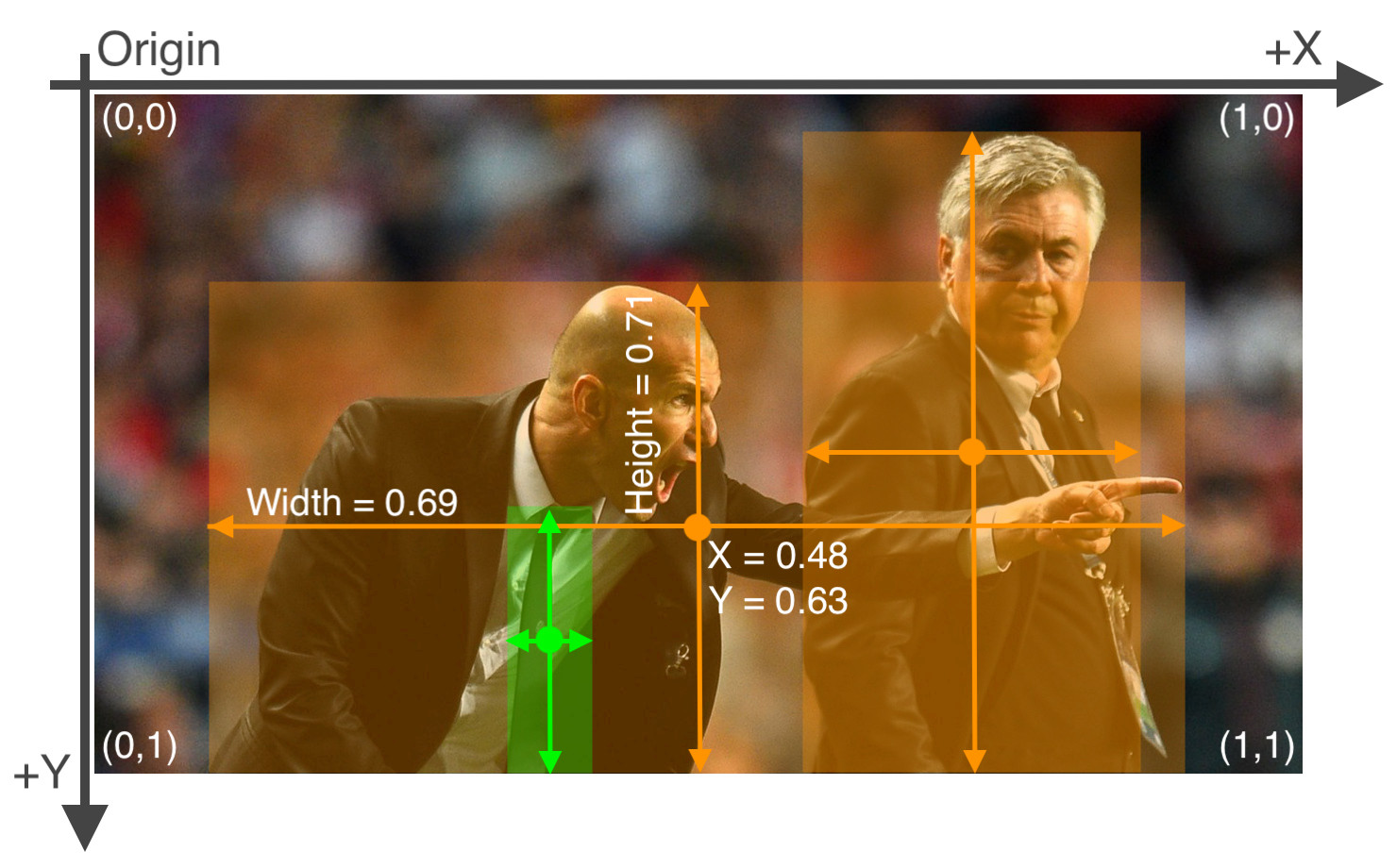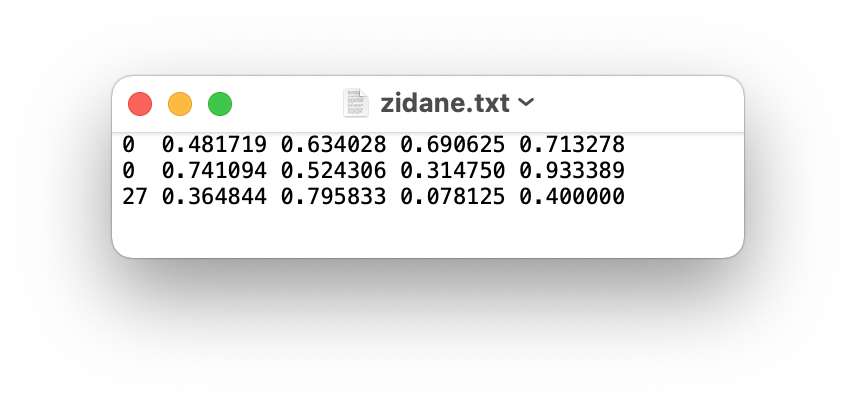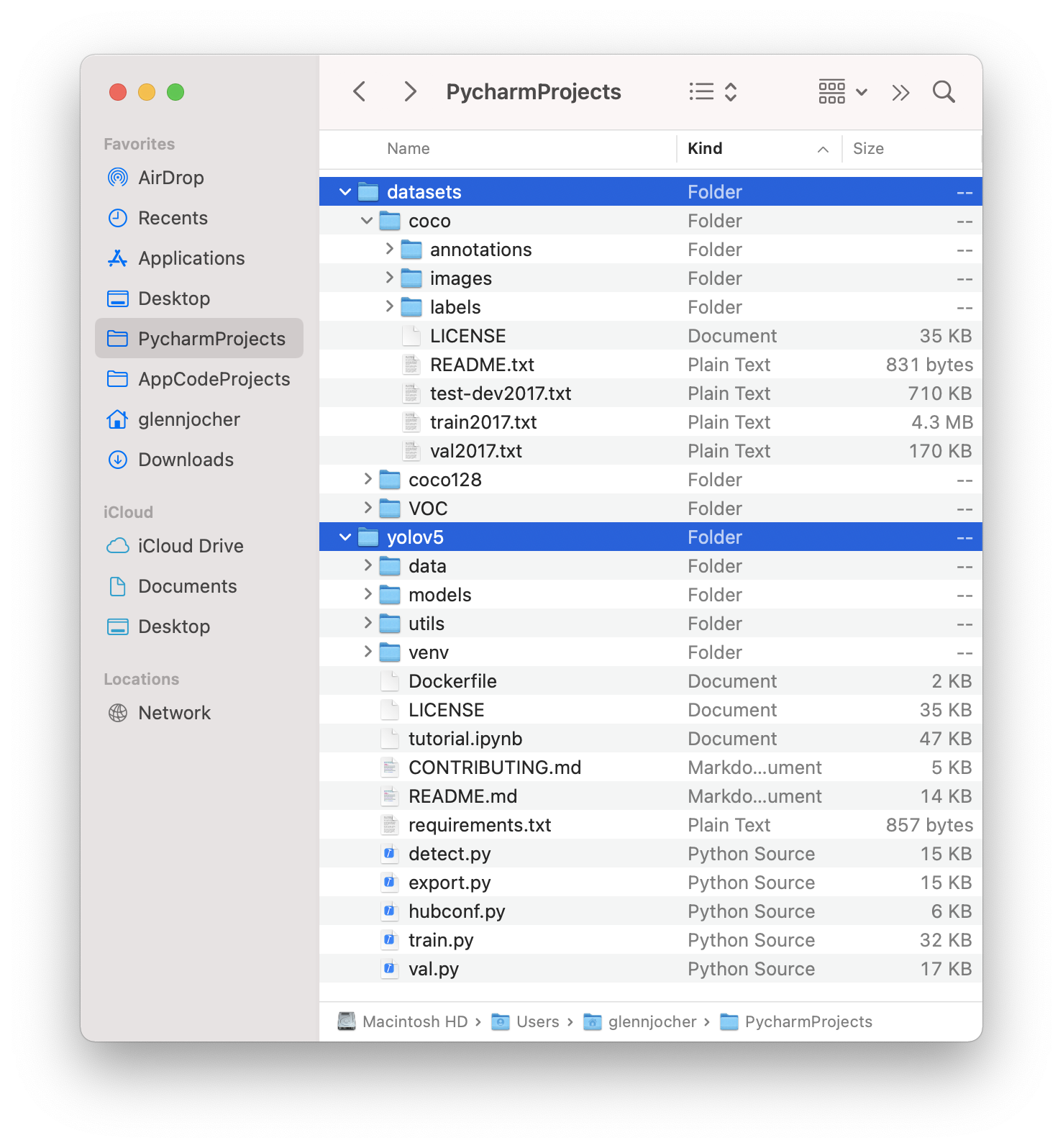yolov3
 yolov3 copied to clipboard
yolov3 copied to clipboard
How to properly load custom trained model with only 1 label
Search before asking
- [X] I have searched the YOLOv3 issues and discussions and found no similar questions.
Question
I followed the very helpful description for how to train a custom model, and successfully trained a yolo-v3 model with only 1 object type. However when I run the following code to load my model on a different system:
weights_path = '\runs\train\exp10\weights\best.pt' model = torch.hub.load('ultralytics/yolov3', 'yolov3', weights_path) # custom trained model model.eval() results = model(image)
The results produced seem to have all the original yolo labels still in place, such as 'cat', etc. And the label numbers are 15, 27,etc, whereas they should only be 0 for the single label. What is the proper way to load the saved model so that the correct number of output labels and label name I trained on is produced? Thanks!
***Update - I've also tried this, after some further googling of this problem:
model = torch.hub.load('ultralytics/yolov3', 'yolov3', pretrained=False, classes=1) weights = torch.load(weights_path)['model'] model.load_state_dict(weights.state_dict())
but this causes the following error:
file "
so I'm still looking for a working solution. Thanks!
Additional
No response
👋 Hello @AceMcAwesome77, thank you for your interest in YOLOv3 🚀! Please visit our ⭐️ Tutorials to get started, where you can find quickstart guides for simple tasks like Custom Data Training all the way to advanced concepts like Hyperparameter Evolution.
If this is a 🐛 Bug Report, please provide screenshots and minimum viable code to reproduce your issue, otherwise we can not help you.
If this is a custom training ❓ Question, please provide as much information as possible, including dataset images, training logs, screenshots, and a public link to online W&B logging if available.
For business inquiries or professional support requests please visit https://ultralytics.com or email Glenn Jocher at [email protected].
Requirements
Python>=3.6.0 with all requirements.txt installed including PyTorch>=1.7. To get started:
$ git clone https://github.com/ultralytics/yolov3
$ cd yolov3
$ pip install -r requirements.txt
Environments
YOLOv3 may be run in any of the following up-to-date verified environments (with all dependencies including CUDA/CUDNN, Python and PyTorch preinstalled):
-
Google Colab and Kaggle notebooks with free GPU:
- Google Cloud Deep Learning VM. See GCP Quickstart Guide
- Amazon Deep Learning AMI. See AWS Quickstart Guide
-
Docker Image. See Docker Quickstart Guide
Status
If this badge is green, all YOLOv3 GitHub Actions Continuous Integration (CI) tests are currently passing. CI tests verify correct operation of YOLOv3 training (train.py), validation (val.py), inference (detect.py) and export (export.py) on MacOS, Windows, and Ubuntu every 24 hours and on every commit.
@AceMcAwesome77 I'd recommend using https://github.com/ultralytics/yolov5. You can train YOLOv3 models there as well using yolov3.yaml.
From the YOLOv5 custom training tutorial:
👋 Hello! Thanks for asking about YOLOv5 🚀 dataset formatting. To train correctly your data must be in YOLOv5 format. Please see our Train Custom Data tutorial for full documentation on dataset setup and all steps required to start training your first model. A few excerpts from the tutorial:
1.1 Create dataset.yaml
COCO128 is an example small tutorial dataset composed of the first 128 images in COCO train2017. These same 128 images are used for both training and validation to verify our training pipeline is capable of overfitting. data/coco128.yaml, shown below, is the dataset config file that defines 1) the dataset root directory path and relative paths to train / val / test image directories (or *.txt files with image paths) and 2) a class names dictionary:
# Train/val/test sets as 1) dir: path/to/imgs, 2) file: path/to/imgs.txt, or 3) list: [path/to/imgs1, path/to/imgs2, ..]
path: ../datasets/coco128 # dataset root dir
train: images/train2017 # train images (relative to 'path') 128 images
val: images/train2017 # val images (relative to 'path') 128 images
test: # test images (optional)
# Classes (80 COCO classes)
names:
0: person
1: bicycle
2: car
...
77: teddy bear
78: hair drier
79: toothbrush
1.2 Create Labels
After using a tool like Roboflow Annotate to label your images, export your labels to YOLO format, with one *.txt file per image (if no objects in image, no *.txt file is required). The *.txt file specifications are:
- One row per object
- Each row is
class x_center y_center width heightformat. - Box coordinates must be in normalized xywh format (from 0 - 1). If your boxes are in pixels, divide
x_centerandwidthby image width, andy_centerandheightby image height. - Class numbers are zero-indexed (start from 0).

The label file corresponding to the above image contains 2 persons (class 0) and a tie (class 27):

1.3 Organize Directories
Organize your train and val images and labels according to the example below. YOLOv5 assumes /coco128 is inside a /datasets directory next to the /yolov5 directory. YOLOv5 locates labels automatically for each image by replacing the last instance of /images/ in each image path with /labels/. For example:
../datasets/coco128/images/im0.jpg # image
../datasets/coco128/labels/im0.txt # label

Good luck 🍀 and let us know if you have any other questions!
👋 Hello, this issue has been automatically marked as stale because it has not had recent activity. Please note it will be closed if no further activity occurs.
Access additional YOLOv3 🚀 resources:
- Wiki – https://github.com/ultralytics/yolov3/wiki
- Tutorials – https://github.com/ultralytics/yolov3#tutorials
- Docs – https://docs.ultralytics.com
Access additional Ultralytics ⚡ resources:
- Ultralytics HUB – https://ultralytics.com/hub
- Vision API – https://ultralytics.com/yolov5
- About Us – https://ultralytics.com/about
- Join Our Team – https://ultralytics.com/work
- Contact Us – https://ultralytics.com/contact
Feel free to inform us of any other issues you discover or feature requests that come to mind in the future. Pull Requests (PRs) are also always welcomed!
Thank you for your contributions to YOLOv3 🚀 and Vision AI ⭐!

